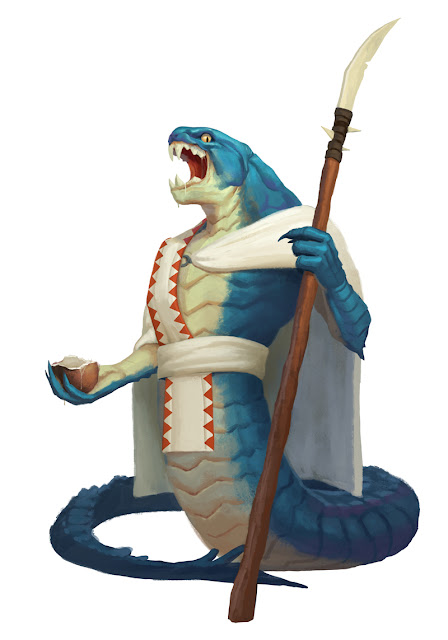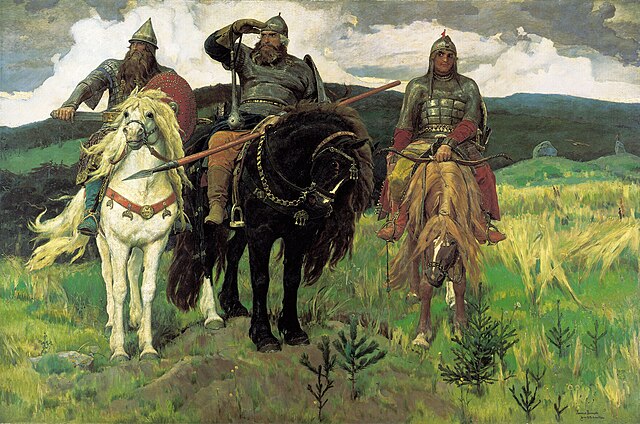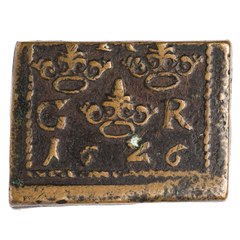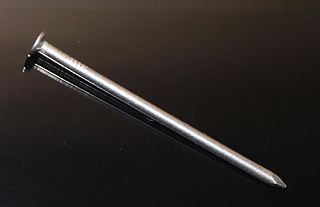 |
Imagem adquirida aqui.
|
Kavajanos para o senado nortenho
Vocês demônios imperiais, escravos dos diinferi e camaradas dos nefilins! Que espécie de cavaleiros vocês são? Megatérios cagam e seu exército lambe. Vocês nunca serão dignos de mandar nos filhos da planície. Não temos medo de seus soldados, lutaremos em terra, em mar, ao lado do tornado e dentro do nevoeiro. Bando de mulas feias, peixes no deserto, escravos pelados, guerreiros com sangue de barata. Moscas do Tártaro, ensopados do esgoto, bobos de todas as cortes, cús de ovelha manca. Idiotas. Desejamos que vocês sejam fervidos nos caldeirões da cólera dos seus cavalos. Assim é como toda Kavaja responde a vocês, escarrões dos bêbados! Nunca serão capazes de ordenar os verdadeiros habitantes desta terra sob este céu. A Lua e os pássaros são testemunhas de nosso juramento, aqui e onde vocês estão.
Chefe Zenão do Facão e todos os jinetes da república.
-Proclamação de independência enviada ao império do norte em 1208.
A República Kavaja é uma terra onde homens e mulheres prezam liberdade e independência, e lutam contra qualquer um que lhes negar esses privilégios. Kavaja é uma grande região no noroeste de Sarba, definida por planícies verdes sem fim, algumas florestas e conjuntos de colinas. Inicialmente colonizada por exilados do Império do Norte há séculos, o povo kavajano nasceu da mescla da cultura nortenha com as tradições e costumes dos nativos. A simbiose logo rendeu frutos. Nativos ensinavam onde pescar, o que era seguro comer, as piores épocas de enchente. Em troca, aprenderam a montar cavalos, trabalhar o metal, histórias e lendas de um mundo inédito. Enquanto muitas colônias sofriam com a sua ignorância e inimizade sangrenta com as tribos, as comunidades fundindo nortenhos e indígenas cresciam e prosperavam, ao ponto que muitos colonos se mudaram para onde algo estava funcionando.
Kavaja possui um sistema de governo baseado em assembleias municipais, onde elegem um magistrado e um representante. O magistrado governa a cidade, enquanto o representante participa do Parlamento. O mesmo elege um magistrado-mor, que governa a nação, e embaixadores. O Parlamento também pode eleger membros de cunho militar em tempos de guerra, e membros de grupos específicos, conhecidos como Irmandades (ou Fraternidades) acabam sendo vistos como os melhores candidatos nestas situações.
Irmandades
O sistema social kavajano é baseado em uma estrutura de grupos chamados "Irmandades". Sete delas são conhecidas como as Grandes Irmandades, tanto em número de membros quanto em importância e tradição. Cada uma tem por objetivo primário conservar as tradições kavajanas, bem como outra função específica dentro da república que varia de irmandade para irmandade. Irmandades misturam as funções de milícia, pastores e cavaleiros errantes. A sua função básica é cuidar das terras comunais onde os
megatérios da comunidade vivem, algo geralmente deixado aos ginetes e também aos mais velhos. Um ginete só pode se tornar um cavaleiro errante quando participa de um grupo dedicado a abater um megatério adulto. A seguir, uma descrição geral de cada Grande Irmandade:
Charangos - A sua fama é de rudes, fortes, brutos, honrados, quase incapazes de fugir de uma batalha ou de se sacrificar pelo bem maior. Eles se encarregam de defender a fronteira sul de Kavaja contra nefilins advindos das
Terras Inquietas. Devido a isso, enquanto as outras Irmandades são cavalarias leves e de guerrilha, Charangos formam companhias de cavalaria pesada que se arremetem contra o inimigo em cargas de até dez mil cavaleiros. Eles também desdenham de construções de madeira e taquara, preferindo erguer castelos de pedra para melhor resistir a cercos. As suas bandanas são coloridas em cinza da pedra e o azul-escuro do entardecer.
Jaçanãs - Eles promovem as artes kavajanas, seja na forma de canção exaltando as tradições, artesanato feito de couro ou esgrima com facões grandes como espadas. Duelistas jaçanãs são os melhores de Kavaja, aprendendo técnicas e estilos de luta capazes de encerrar um combate com um único ataque. As suas bandanas são coloridas no branco do osso e o azul do céu claro sem nuvens.
Jucurês - As suas terras são, na maioria, as serras de Kavaja e as fronteiras montanhosas do sudeste, divisas com o Império do Norte. Isso torna os Jucurês os primeiros a defenderem a região contra invasões nortenhas ou dos bárbaros montanheses. Eles também são conhecidos pela sua mistura de luta e dança usando duas armas (quase sempre dois facões). Viver nas áreas mais isoladas de Kavaja parece tornar os membros dessa Irmandade solitários e reclusos. Os Jucurês mantém muitos mosteiros onde vivem monges saudosos e introspectivos. As suas bandanas são coloridas no verde da colina e o vermelho da terra vermelha.
Graxains - Para eles, qualquer ação desonrosa não marca apenas aquele que o fez, mas também os seus antepassados. Isso os faz agressivos e tradicionalistas mesmo entre os demais cavaleiros errantes. Por exemplo, usam o
chiripá original dos antigos nativos ao invés das bombachas. Como são a Irmandade mais antiga e mais numerosa, colocam os seus ideais e deveres acima de tudo. As suas bandanas são coloridas no dourado do trigo e o marrom do couro.
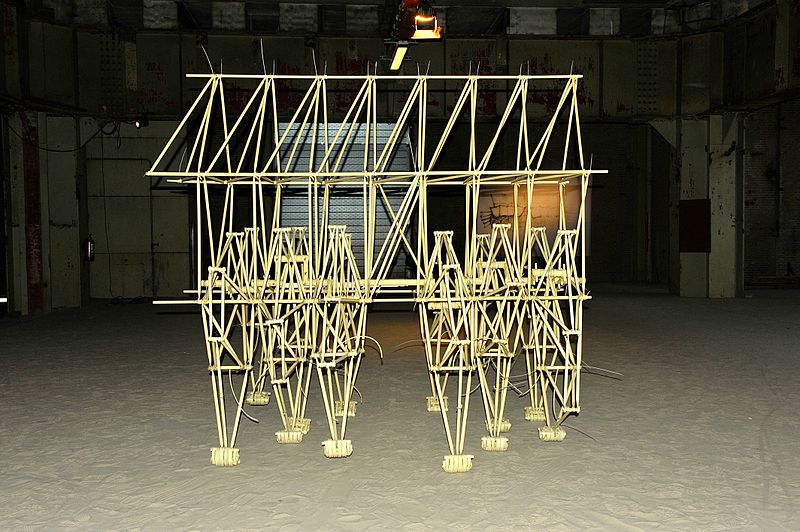 |
| Author
FaceMePLS from The Hague, The Netherlands |
Acauãs - Esses acreditam em duas coisas: na paz e na magia. Buscam ensinar ao povo que, apesar do receio dos mesmos, magia e paz podem andar de mãos dadas. Para garantir que assim seja, selecionam qualquer pessoa com talento para a magia e a ensinam em suas escolas arcanas, que também são ótimas em ensinar assuntos em geral. Eles também criaram os "strandets", estranhos veículos feitos de taquaras eólicas, madeira, corda e velas que usam a força do vento para mover as suas múltiplas pernas. Alguns strandets são tão grandes que acomodam dezenas de pessoas, servindo de escolas ambulantes que percorrem toda Kavaja. As suas bandanas são coloridas no laranja da bergamota e no vermelho da flor de petúnia.
Urutus - Especialistas em espionagem, guerrilha e assassinato. Usam de uma infame técnica chamada "degola veloz" para que todos saibam que um Urutu eliminou o seu alvo. Os conhecimentos e vantagens adquiridos por eles quase nunca são compartilhados com outros, o que causa uma desconfiança, muitas vezes justificada. Um detalhe interessante é de que muitos canteiros e arquitetos urutus construíram as grandes estruturas em cidades kavajanas. Graças a isso, muitos desses prédios possuem passagens secretas que somente um Urutu sabe como acessar. Os membros da Irmandade costumam cobrir o rosto ou usar pinturas tribais para dificultar a sua identificação. As suas bandanas são coloridas no carmesim da folha de outono e o preto da noite.
Ruanos - Exímios cavaleiros e os melhores criadores, laçadores e domadores de cavalos da república, empregando muitos homens-do-mato (druidas) como veterinários. São a Irmandade mais nova, mas desejam estar em pé de igualdade às demais, o que os faz organizar expedições em busca de glória para fora das terras kavajanas. Estas voltam com novidades que os Ruanos incorporam, chegando ao ponto de importar armas de fogo nortenhas. Isso faz com que as outras Irmandades vejam os Ruanos como impacientes, inexperientes e até bárbaros. As suas bandanas são coloridas no branco do linho e no púrpura da nobreza.
Portão Férreo
Fraternidade e Liberdade
- Lema municipal
Essa cidade de cem mil habitantes é a capital da República Kavaja. Aqui fica o Parlamento, onde os eleitos pelo povo discutem e brigam sobre tradições e acordos. Os "muros" são grandes extensões de taquaras eólicas que formam uma barreira de ar invisível, mas capaz de defletir até balas de canhão. O interior da cidade é amplo, com espaços e vias largas por onde passam cavalos e megatérios. Como todo espaço urbano kavajano, Portão Férreo tem um cerrito, uma colina artificial que acomoda os salões das Grandes Irmandades e o Palácio da Liberdade, onde fica o Parlamento. O cerrito cresce junto com a população, ganhando diversos níveis, sendo ligado a montes menores por rampas largas. Nas encostas, silberines usam megatérios para escavar lares sustentados por muitas lajes de calcário nas paredes e teto. Cada membro da família adota uma delas para talhar runas e desenhos sobre a sua vida.
Religião
Vento abraça todos sem prender ninguém.
-Expressão kavajana.
Kavajanos cultuam alguns dos deuses do panteão nortenho, especialmente Palpaleos. Mas para eles, o líder do panteão não é Diveus, que é visto mais como um deus simbolizando tudo de ruim do Império do Norte, como escravidão e ambição desmedida. O maior deus kavajano é o Minuano, também chamado Vento-Tempo. Kavajanos afirmam que o seu deus vento lhes sussurra o que viu nas distâncias que percorreu, percorre e percorrerá, pois ele também é o deus do tempo. No solstício de inverno, sacerdotes se retiram para as colinas e ficam calados, apenas ouvindo o Minuano, para depois contar à sua comunidade as sortes e azares que virão. Alguns clérigos conseguem ouvir o que o vento conta o ano todo e são prezados por todos devido a essa habilidade. Os templos do Minuano também são distintos: eles têm orgãos complexos integrados à arquitetura, produzindo músicas conforme o vento sopra pelos tubos de taquara eólica. A Catedral Minuana em Portão Férreo possui um orgão com dez mil tubos, produzindo sinfonias suaves que nunca se repetem sem intervenção humana, cujo tom influencia a cidade inteira.
Quando o Vento-Tempo sente necessidade de intervir nos assuntos dos mortais, o faz através do quarteto de Ventos-entidades, partes de si: Bóreas, Tufão Gélido do Norte; Zéphyr, Ciclone Assobiante do Oeste; Vulturnus, Tornado Sombrio do Leste; Auster, Furacão Destruidor do Sul. Esses quatro deuses menores representam o poder destrutivo da natureza, mas também a renovação que vem após.
Existe um aspecto sobrenatural dos ventos kavajanos que apenas alguns cavaleiros, magos e sacerdotes sabem: onde os ventos vindos das quatro direções se encontram, está o Evento, um imenso furacão perpétuo que nunca se move. Ele é a personificação física do Vento-Tempo. Mas ele também é um portal para outras regiões e épocas de Kavaja. Alguém que saiba como cavalgar os ventos pode se deixar levar para outro lugar, outro passado e até outro futuro. A Irmandade Austera é um pequeno grupo de herois que usam as lanças-chave que acessam o Evento e perfuram as névoas ao seu redor, para garantir que as tradições de Kavaja, assim como a sua independência e a liberdade de seus habitantes, seja garantida no passado, presente e futuro.
Finalmente, Zenão do Facão é cultuado como um heroi imortal, que surge quando e onde é mais necessário. As canções falam dele enfrentando um grande mal; ou dando um cavalo mágico para o heroi; talvez guiando alguém pelos ventos. Diversas Irmandades juram que foram fundadas por Zenão, o que pode ser até verdade.
CavaloUm homem sem cavalo é meio homem; um homem com cavalo vale por dois homens.
-Provérbio kavajano.
Crianças aprendem a cavalgar com dois anos de idade e ganham o seu próprio cavalo aos dez. Uma grande parte dos kavajanos são cavaleiros errantes, praticamente nômades vivendo das manadas que pastoreiam. Mas mesmo os fazendeiros, pescadores e demais aldeões têm um cavalo, preferindo cavalgar a andar mesmo quando não precisam. Manadas costumam ter de quinze a cinquenta membros, todos guiados por um garanhão que chega a enfrentar onças para defender a sua manada. O garanhão também costuma ser o cavalo sagrado de sua manada, participando de cerimônias religiosas e recebendo regalias como nunca ser cavalgado por ninguém. Kavajanos chegam a honrar os ancestrais de seus animais com sacrifícios, assim como fazem com a própria família. Cavalos também são dotes de casamento, pagamento de multas e, às vezes, o único bem de um kavajano além das roupas do corpo. Mas também existem aqueles que chegam a possuir milhares de cavalos. Qualquer desavença é desculpa para uma corrida a cavalo, em que o vencedor também ganha a discussão. Alguém pode viver por anos em Kavaja e ver muitas pessoas miseráveis, mas jamais verá um cavalo maltratado ou com fome. As pessoas sabem cuidar tão bem de seus cavalos que não se encontram manuais ou pergaminhos, tudo é passado pelos pais para os seus filhos. Veterinários são usados mais para prevenir doenças e em casos graves. Ainda assim, kavajanos vendem e exportam os seus cavalos, mas requerem promessas verbais ou escritas de que os animais serão bem tratados. E quem quebra uma dessas promessas pode ser caçado até o outro lado do continente.
Megatério
Megatérios, megatérios e mais megatérios! Você não consegue escapar deles nem ao dormir, pois a maldita vela é feita de gordura de megatério, uma coisa sebosa, amarelada e fedorenta, que os kavajanos esfregam em seus churrascos. Que, obviamente, são de megatério. Ahhrgh! Eu não sei o que é pior, os megatérios ou a noção de república popular!
-Dominique Elénnem, diplomata imperial.
Os kavajanos plantam trigo, arroz, tabaco, cevada e erva-mate; criam desde galinhas e preás a porcos e capivaras; mas o que chama mesmo a atenção são os
megatérios. Formam o grosso do gado kavajano, a fonte de quase toda a carne que vira charque. Comem de tudo: raízes desenterradas com as garras potentes, capim, cascas de árvore, arbustos, cactos, as folhas e frutos das árvores mais altas. Adoram abacates e ocasionalmente devoram carniça: são capazes de afugentar um predador da presa abatida, embora nunca ataquem por iniciativa própria. Megatérios escavam redes de túneis encontrados por toda Kavaja. Os primeiros silberines a chegar na região os usaram como abrigo e os seus lares são escavados por megatérios até hoje.
Os adultos são deixados soltos nos campos comunais das aldeias e cidades kavajanas, sob responsabilidade das fraternidades. Os jovens ficam em currais assim que nascem, os pais trazendo-lhes comida tal qual os pássaros indo e voltando ao ninho. A maioria é abatida logo após os pais deixarem de fazer isto, quando já estão de um tamanho razoável e sem os osteodermas que tornam o couro dos adultos tão impenetrável quanto uma armadura de placas. Os mais fortes são marcados e soltos assim que formarem um casal que se mantém pelo resto da vida. Quando um megatério morre, o seu par fica tão agressivo e perigoso que a fraternidade precisa mandar cavaleiros para abater o animal.
Kavajanos aproveitam tudo de um megatério abatido: carne e leite; quase todo o couro é reforçado demais para pergaminhos, mas é excelente para jaquetões, palas reforçados que podem ser enrolados no braço para duelos e as bandanas que todo kavajano prende na testa; as fezes são usadas como adubo e queimadas em fogueiras (e cheiram a incenso quando queimam); o esqueleto do animal vira copos, remédios, pentes, palitos de dente, agulhas de costura, brasões, dados e estátuas; dezenas de metros de intestinos rendem cordas para arcos e guindastes. Milícias kavajanas costumam contar com boleadeiras, cavalos, lanças, dardos, azagaias e um casal de megatérios: monstros,
orcs e grupos de saqueadores são algumas das ameaças contidas por o que alguns estrangeiros descrevem "dois ursos do tamanho de elefantes em duas patas e garras grandes como o meu braço."


